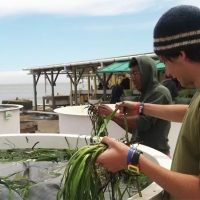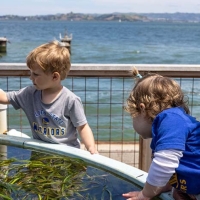Clarifying the Causes of Blooms
Contrary to the expectations, ocean acidification may not prompt the production of toxic domoic acid.
Albert Hitchcock’s film The Birds is famous for its idiosyncratic source of terror: several species of birds begin to attack the people living in a coastal village in California. And while the film is fictional, it was inspired by a real-world phenomenon. In November 1961, “crazed seabirds pelted the shores of North Monterey Bay, California,” as one newspaper put it at the time.
We know today that local marine phytoplankton produced the neurotoxin known as domoic acid, which the birds consumed, precipitating the attack. At the time, though, the event was a mystery. Much of the modern science on domoic acid — and on Pseudo-nitzschia, the single-celled marine alga that produces it — commenced after hundreds of people in eastern Canada fell ill in 1987 after consuming contaminated blue mussels. Three people died. The outbreak underlined the potential threat to both ecosystems and public health, as the toxin worked its way up the marine food chain.


